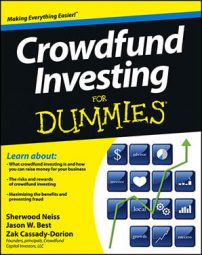A merger or acquisition is another common way for a crowdfund investor to have an exit. It occurs when a company combines forces with another company (merger) or when a company gets bought out by a larger company (acquisition). These deals can be structured in many ways.
Usually, when a company is bought out, investors are given cash or stock — or a combination of both — as compensation. The value of the company buying out your shares will dictate which one (cash or stock) is better for you.
For instance, if your crowdfund investment company is a specialty food shop selling pasta and cheese with one location, and a larger company that has six locations buys you out, you’ll likely be better off if you get cash for your shares and not stock. On the other end of the spectrum, if your company makes high-tech widgets and Apple buys you out, it very well may be much better if you get stock.
Of all the ways you can exit your investment, the only option that offers you a degree of control is selling on the secondary market. All the other options, including mergers and acquisitions, are decided by the majority stockholders. This fact could frustrate you, so you should think about it upfront.
Consider this example and how you would’ve reacted as an investor: Groupon, the well-known group-buying website, was offered $6 billion to sell the company. Amazingly, the majority shareholders turned down this offer.
Many minority shareholders probably were furious with this decision, but they had zero control over it. As with all things related to crowdfund investing, you have to manage your expectations and understand the lack of control you may have over how you exit your crowdfunded investment.

